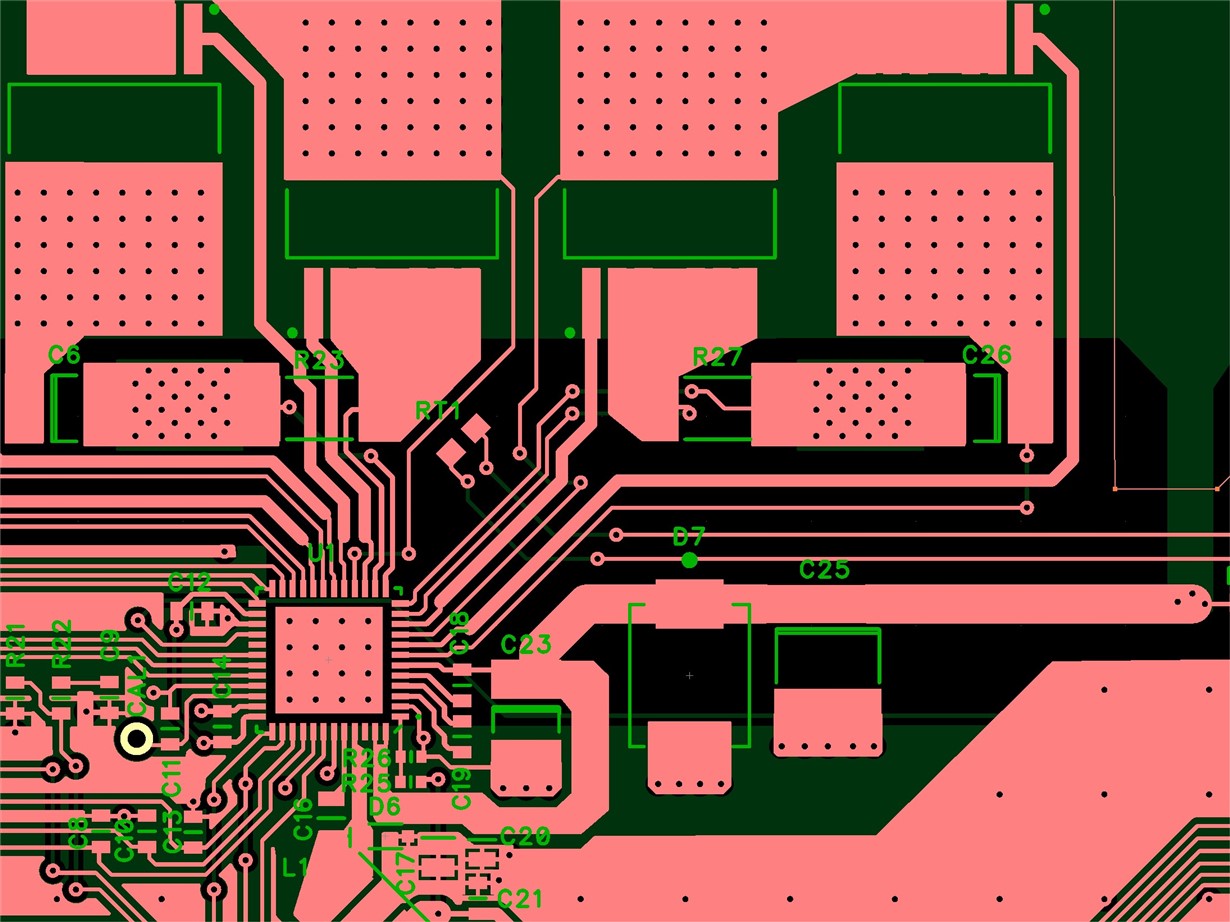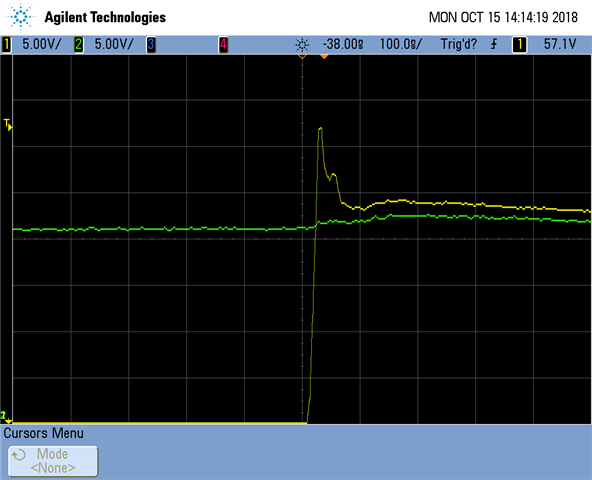Other Parts Discussed in Thread: DRV8323,
We have a design using the DRV8323 that has been working great but every once in a while the DRV8323 fails with all the fet gate drives shorted. The Mosfets are fine! The etches to pins 7 (VDRAIN), 8(GHA) and 9 (SHA) get blown off the PCB making the board un-repairable. The PCB layout was taken from the App notes and Data sheet. The pcb copper is 2oz. The board temperature by the DRV8323 is 50C. We use it in PWM x 1 mode, supplying a 15KHz signal. The supply voltage is 48Volts and has a large snubber to keep the supply to less than 52 volts (measured) during a back EMF event. The motor is rated for 500 watts. The internal switching power supply continues to operate properly! Please advise




